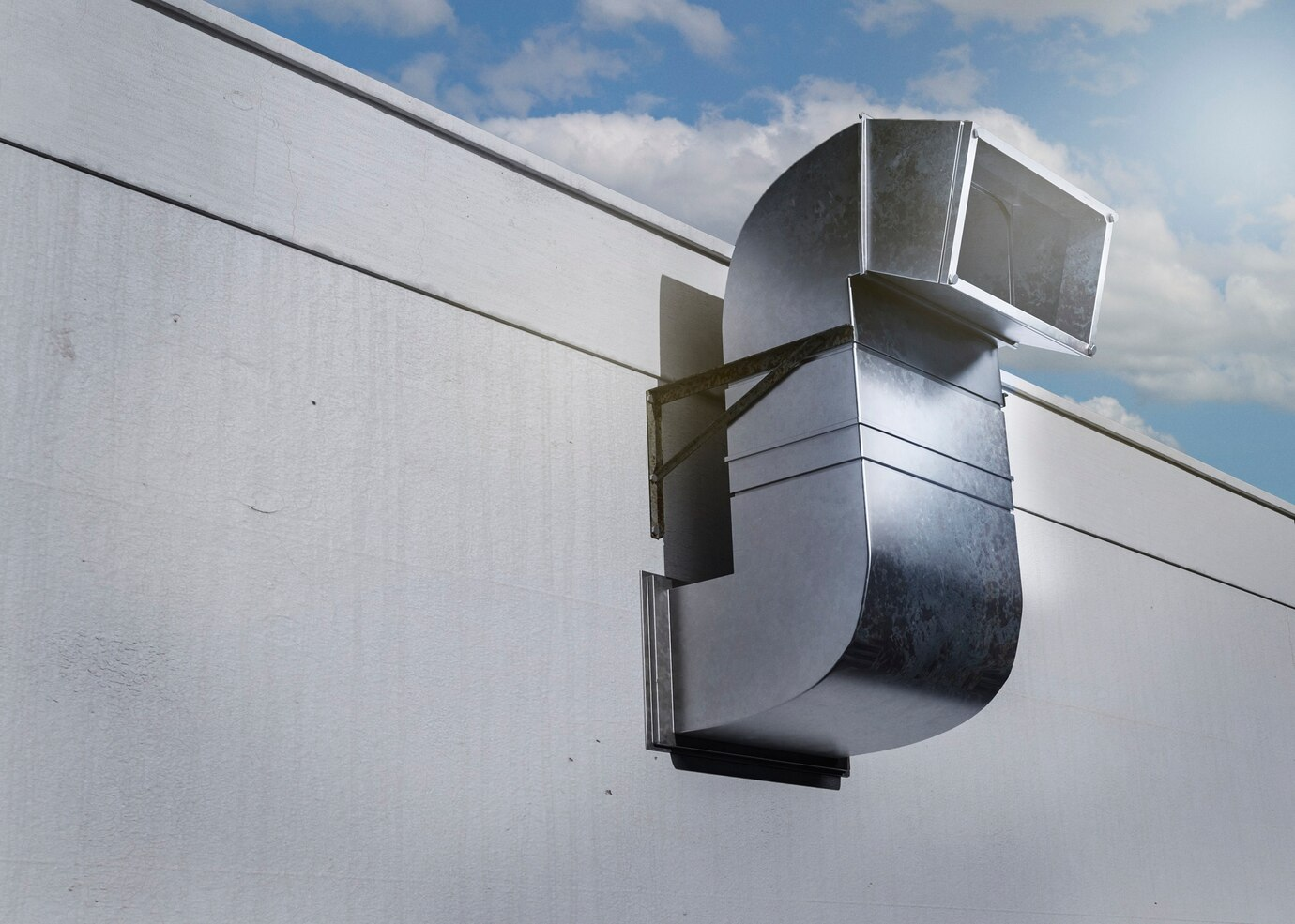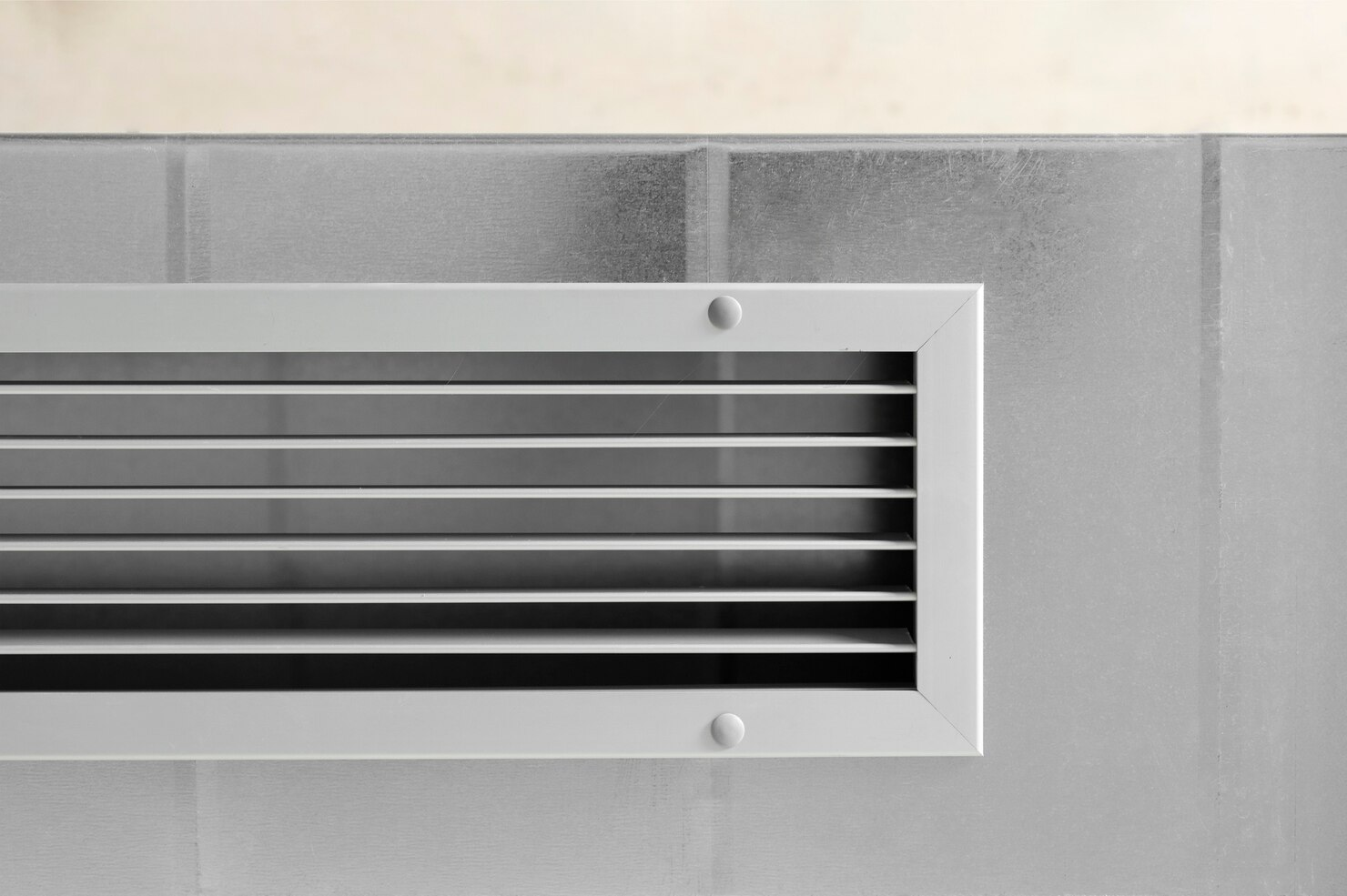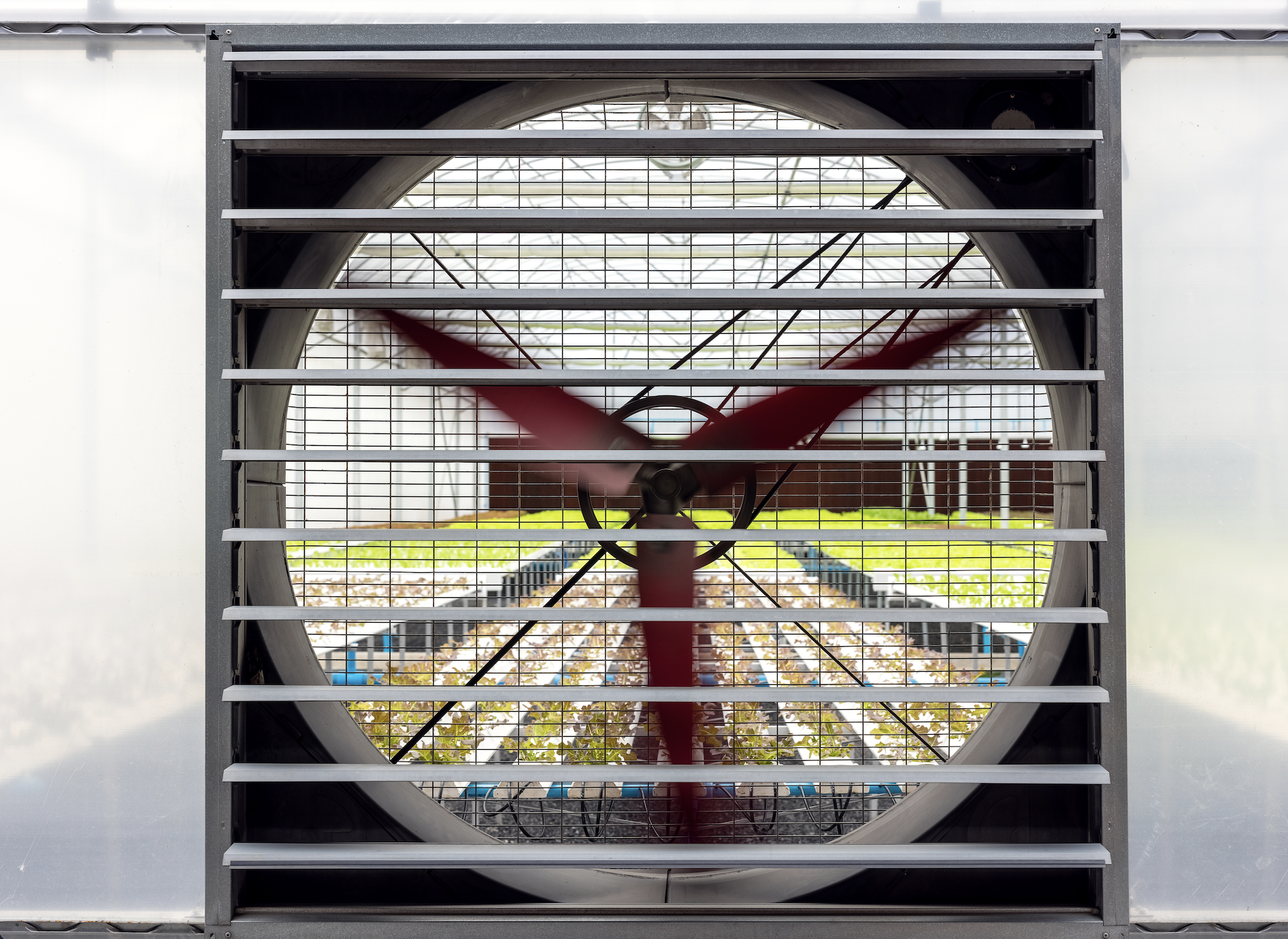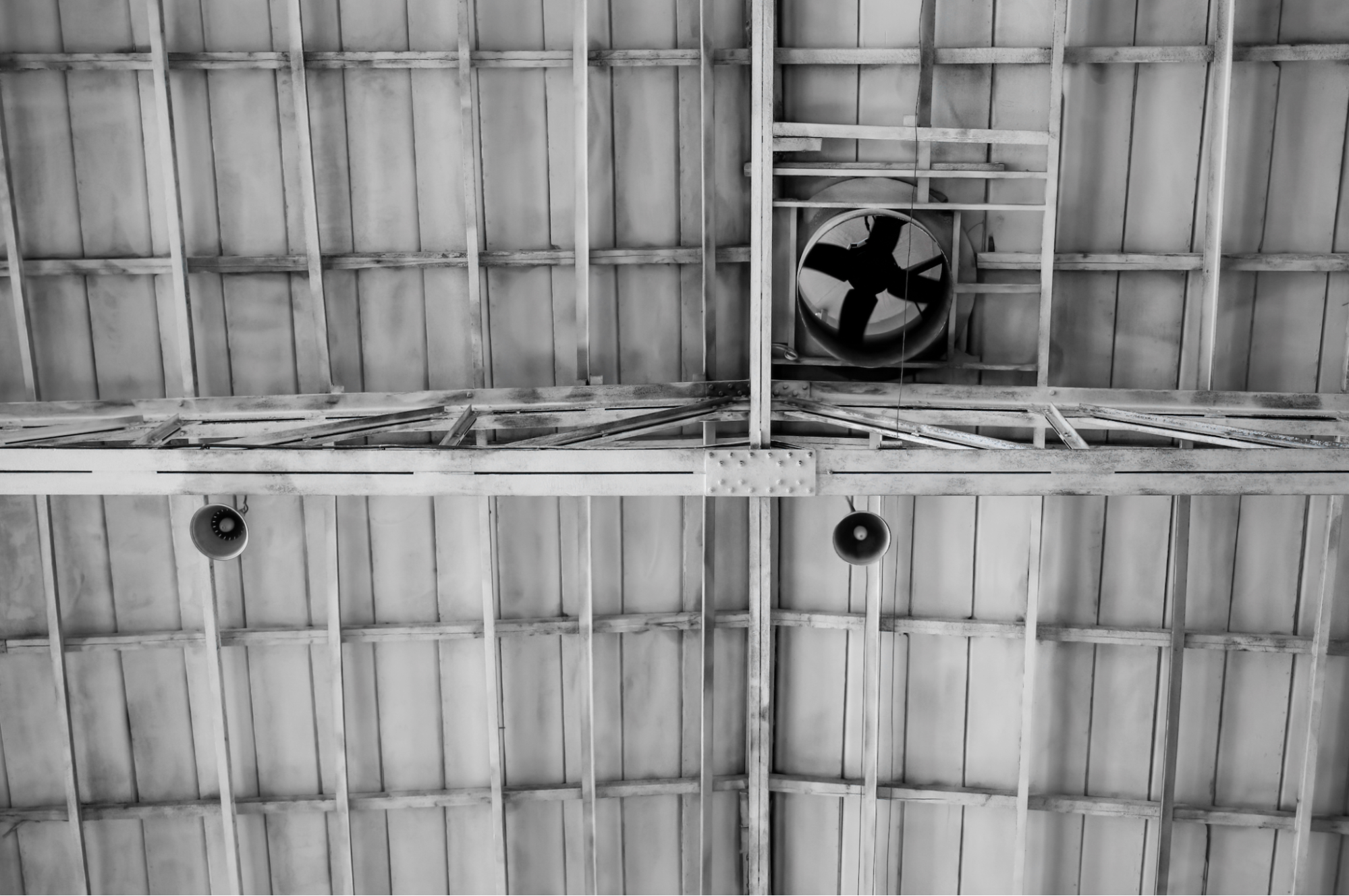
Industrial Ventilation Systems 101
Industrial ventilation systems are designed to maintain air quality, but these systems also help control the airborne contaminants, which create a healthier and safer environment for workers. By continuously circulating fresh air and removing harmful substances, ventilation systems function as the lungs of a factory.
Interested in learning more about industrial ventilation system design?
Let’s jump in!
Types of Industrial Ventilation Systems
There are several types of industrial ventilation systems, all of which are used for different purposes.
General Ventilation

General ventilation systems, or dilution systems, work by diluting contaminated air with fresh air in order to lower the concentration of harmful substances.
They are particularly useful in environments where contaminants are dispersed over a wide area and are not highly concentrated, such as a factory or a manufacturing facility.
In fact, Metal Form Manufacturing’s louvers have been used in ventilation just like these systems to allow optimal airflow while also preventing the entry of rain, dust, and other contaminants.
Local Exhaust Ventilation
Local exhaust ventilation systems are designed to capture contaminants at their source before they can disperse throughout the facility, and they are typically used in industries where hazardous materials are handled.
They function by using hoods, ductwork, and fans that direct contaminated air away from the workspace and expel it outside.
Metal Form Manufacturing’s dampers can be integrated into these industrial ventilation systems as a way to regulate airflow and ensure contaminants are efficiently removed.
Key Components of Industrial Ventilation Systems
There are several key components of industrial ventilation systems. For example:
Air Handling Units
The air handling unit (AHU) is the heart of an industrial ventilation system. Not only does it ensure the circulation of fresh air and the removal of contaminated air but it also provides the mechanical power to move air in and out of the facility.
Ductwork
Ductwork is another essential element for ductwork throughout the facility, which enables efficient and balanced airflow within the industrial building.
In addition, it directs the airflow to specific areas so that clean air is supplied where needed and contaminated air is effectively removed.
Filters and Cleaning Devices
Filters can be used to purify air and remove harmful particles. They also ensure that the air being recirculated or expelled is clean and safe to breath—cleaned of harmful contaminants.
However, various types of filters, including HEPA and activated carbon filters, are used depending on the specific needs of the facility.
Exhaust Fans

In collaboration with ductwork design, exhaust fans play a vital role in expelling stale air from the facility and allowing fresh air to enter.
These fans are often controlled based on air pressure in different parts of the factory and work to maintain desired airflow patterns.
Water Supply Controllers
Water supply controllers help manage the water flow in evaporative cooling systems, and they ensure precise regulation of water distribution that enhances the efficiency.
Gravity Vents
Gravity vents use natural forces such as wind and thermal buoyancy to facilitate the movement of air without requiring mechanical power. They are an energy-efficient solution for expelling hot and contaminated air from industrial facilities that help to maintain a safer and more comfortable working environment.
Roof Curbs
Roof curbs provide a secure and stable base for rooftop equipment. They are designed to support and elevate rooftop units so that they are properly positioned and secured.
Design Considerations for Industrial Ventilation Systems

Custom Design
Designing an industrial ventilation system requires a customized approach tailored to the specific needs of the facility. Factors such as airflow patterns, types of contaminants, facility layout, and regulatory requirements must be considered to make sure that the system is effective and compliant.
Noise Control
Noise control is a critical consideration in industrial ventilation system design. High-quality equipment and sound absorbers in ductwork can significantly reduce noise levels to create a more comfortable and productive work environment. Noise control measures are essential for compliance with noise regulations and to improve overall workplace conditions.
Applications in Various Industries
Although industrial ventilation systems are common in larger warehouse settings, there are a few other industries that benefit from these systems. Here are a few:
Food Industry
In the food industry, ventilation systems must prevent contamination and meet stringent food safety standards. These systems require a higher degree of control to ensure that air quality does not compromise food products.
Chemical Plants
Chemical plants handle hazardous materials that require robust ventilation systems to manage emissions and protect workers. Local exhaust ventilation systems are particularly important in these settings so that they can capture and remove dangerous fumes and particles at their source.
Benefits of Effective Industrial Ventilation

Employee Safety
Industrial ventilation systems protect workers from airborne hazards by effectively removing contaminants. Ventilation systems also reduce health risks and create a safer working environment.
Equipment Longevity
Effective ventilation prevents dust buildup, which increases the longevity of a ventilation system’s lifespan.
Not to mention, by keeping the air clean, ventilation systems help maintain the integrity of equipment, which leads to fewer breakdowns and lower maintenance costs.
Cost Efficiency
Investing in a modern industrial ventilation system can als result in significant cost savings over time. Improved air quality leads to better worker health and productivity, while reduced maintenance needs and longer equipment life contribute to lower operational costs.
Optimize Your Industrial Ventilation with Metal Form Manufacturing
At Metal Form Manufacturing, our expertise in designing and implementing customized industrial ventilation systems helps our clients access high-quality air and operational efficiency.
Interested in learning more about our industrial ventilation design solution?
Contact us today for more information!
